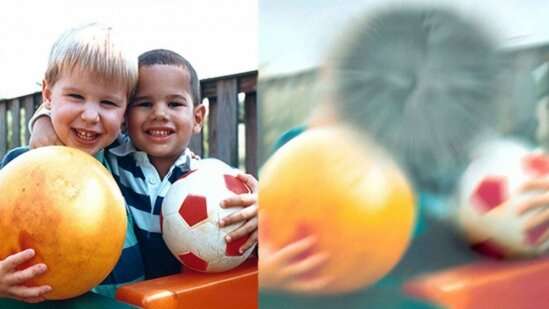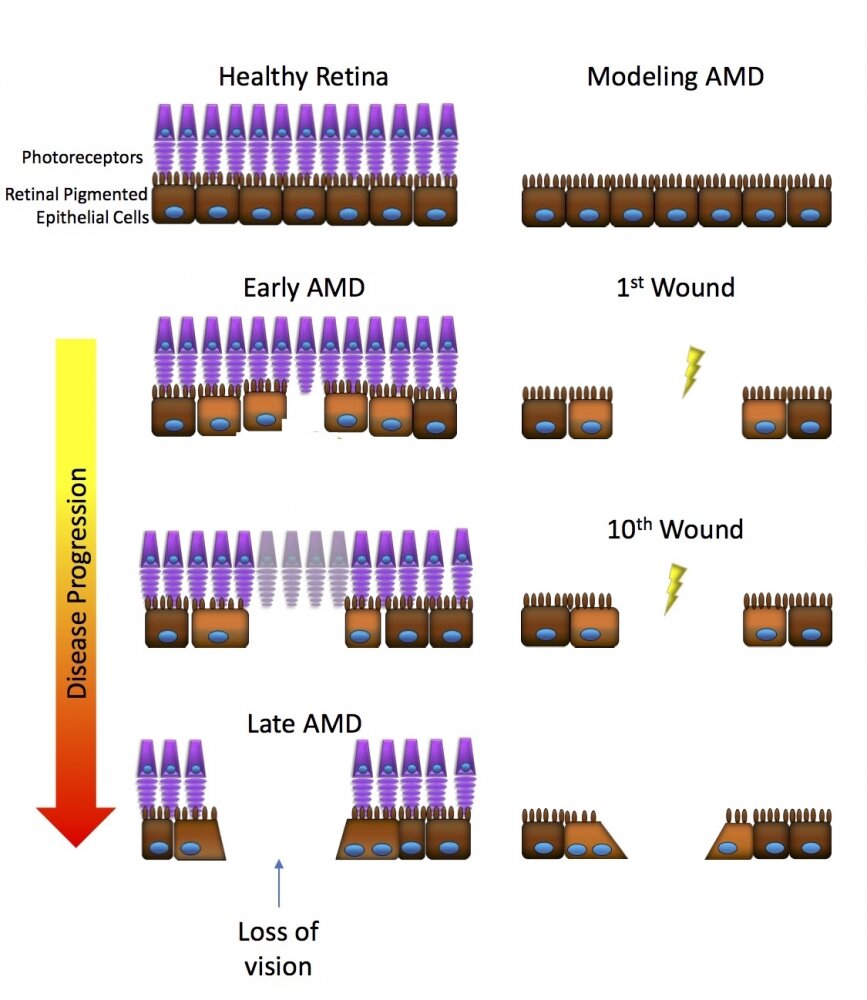
Age-related macular degeneration (AMD) is the leading cause of vision loss in the elderly. Now, new research using 3D organoid models of the eye has uncovered clues as to what happens in AMD, and how to stop it.
In AMD, a person loses their central vision because the light sensitive cells in the macula, a part of the retina, are damaged or destroyed. This impacts a person’s ability to see fine details, recognize faces or read small print, and means they can no longer drive.

No one is quite sure what causes AMD, but in a study in the journal Nature Communications, German researchers used miniature human retina organoids to get some clues.
Building a better model for research
Organoids are 3D models made from human cells that are grown in the lab. Because they have some of the characteristics of a human organ—in this case the retina—they help researchers better understand what is happening in the AMD-affected eye.
In this study they found that photoreceptors, the light sensitive cells at the back of the retina, were missing but there was no sign of dead cells in the organoid. This led them to suspect that something called cell extrusion was at play.
Cell extrusion is where a cell exports or sends large particles outside the cell. In this case it appeared that something was causing these photoreceptors to be extruded, leading to the impaired visual ability.
In a news release Mark Karl, one of the authors of the study, said, “This was the starting point for our research project: we observed that photoreceptors are lost, but we could not detect any cell death in the retina. Half of all photoreceptors disappeared from the retinal organoid within ten days, but obviously they did not die in the retina. That made us curious.”
Using snakes to fight AMD
Further research identified two proteins that appeared to play a key role in the process, triggering the degeneration of the retinal organoid. They also tested a potential therapy to see if they could stop the process and save the photoreceptors. The therapy they tried, a snake venom, not only stopped the photoreceptors from being ejected, but it also prevented further damage to the retinal cells.
Karl says this is the starting point for the next step in the research. “This gives hope for the development of future preventive and therapeutic treatments for complex neurodegenerative diseases such as AMD.”
CIRM’s fight against blindness
The California Institute for Regenerative Medicine (CIRM) has funded six clinical trials targeting vision loss, including one for AMD. We recently interviewed Dr. Dennis Clegg, one of the team trying to develop a treatment for AMD and he talked about the encouraging results they have seen so far. You can hear that interview on our podcast “Talking ‘Bout (re)Generation.”




















 Diane highlighted the work that CIRM is doing to help battle vision destroying diseases; how
Diane highlighted the work that CIRM is doing to help battle vision destroying diseases; how